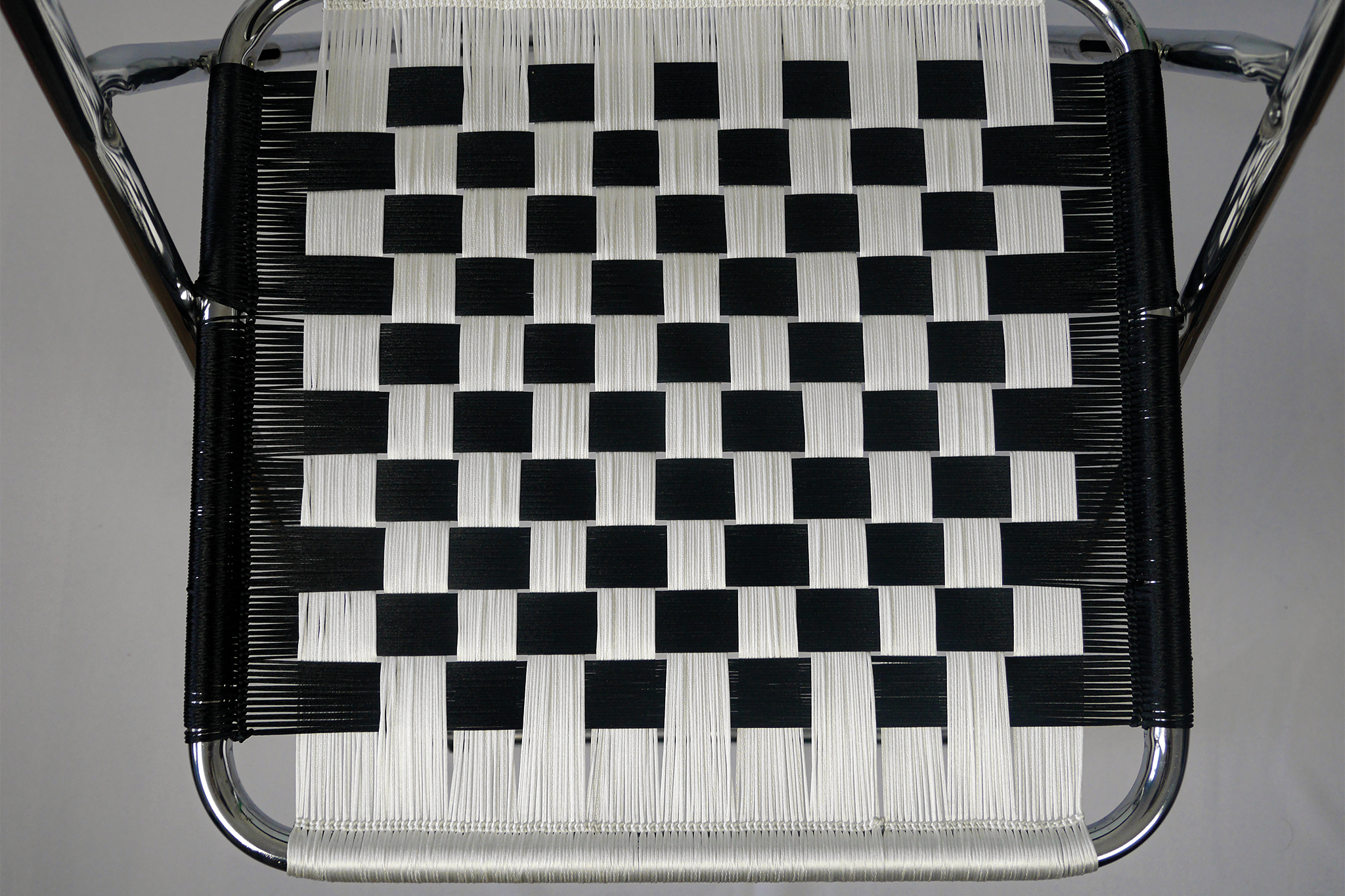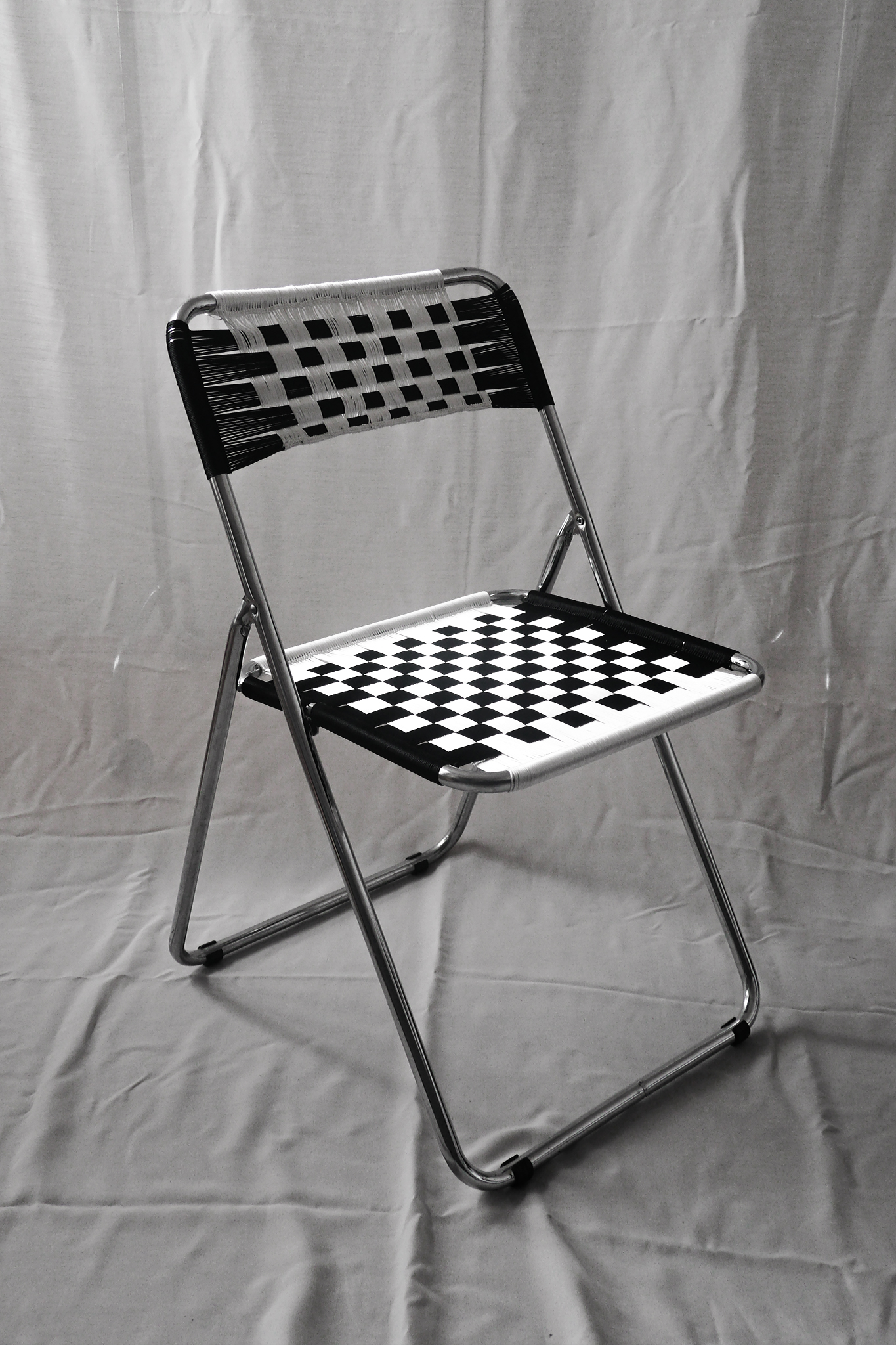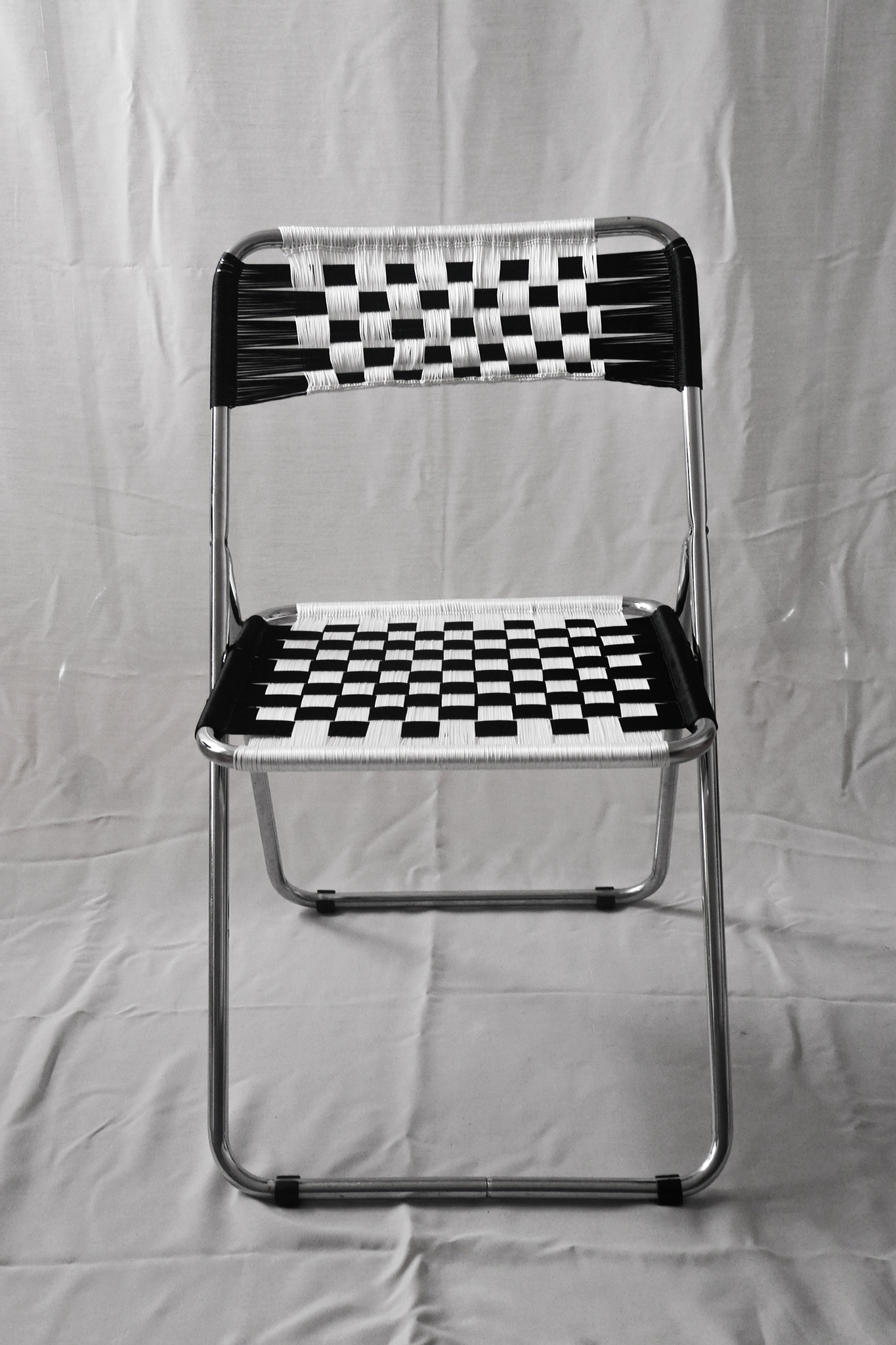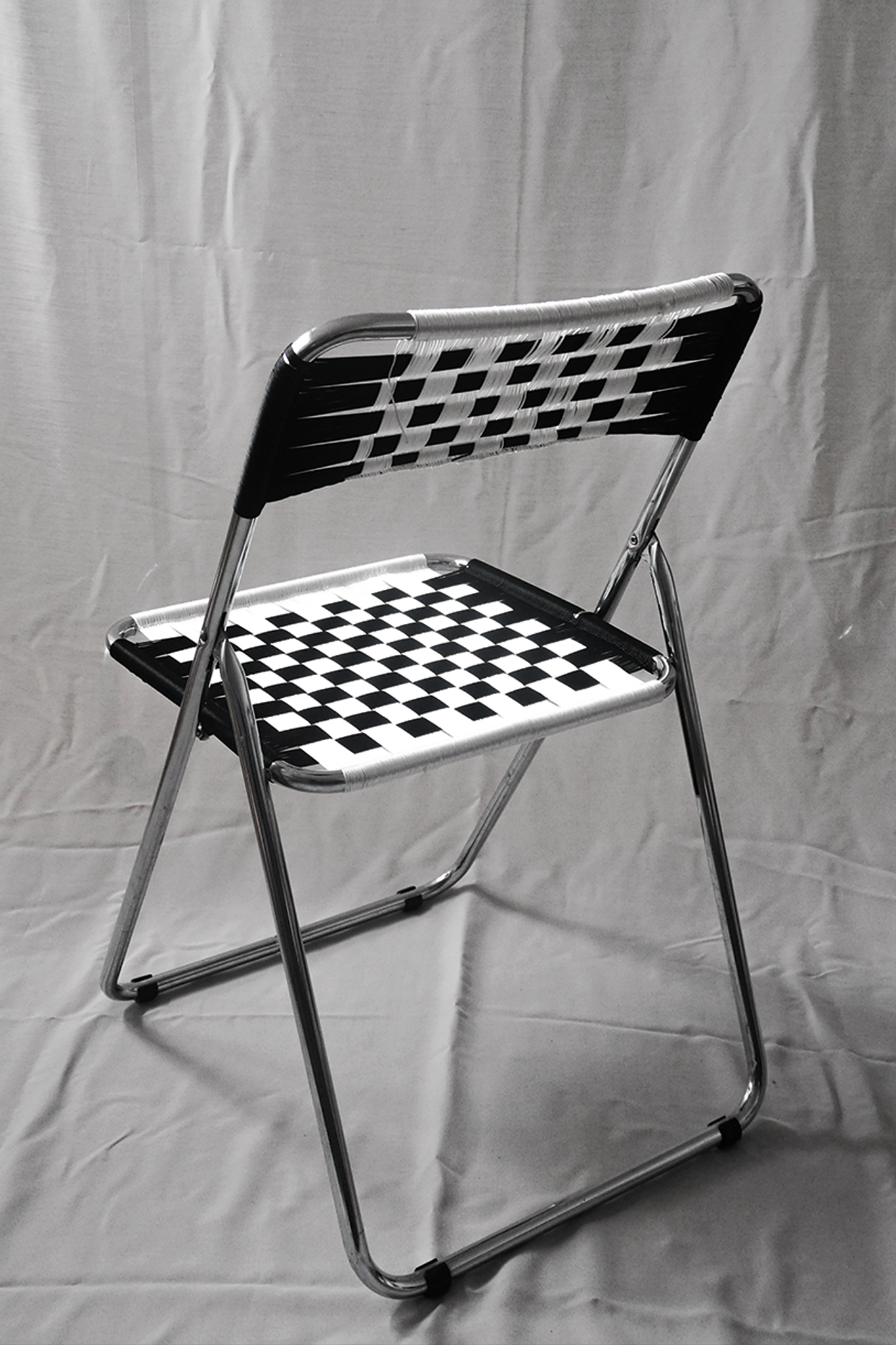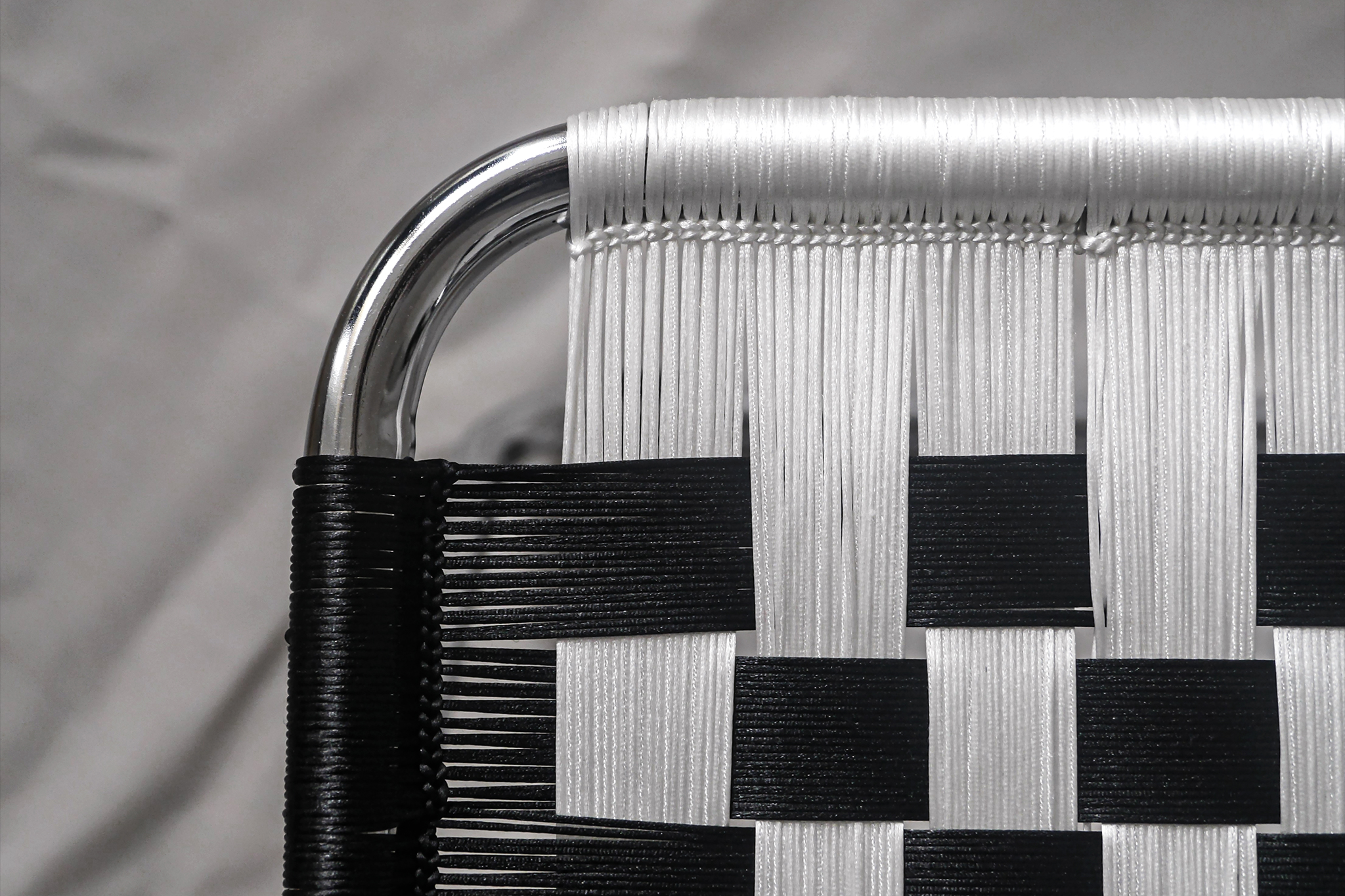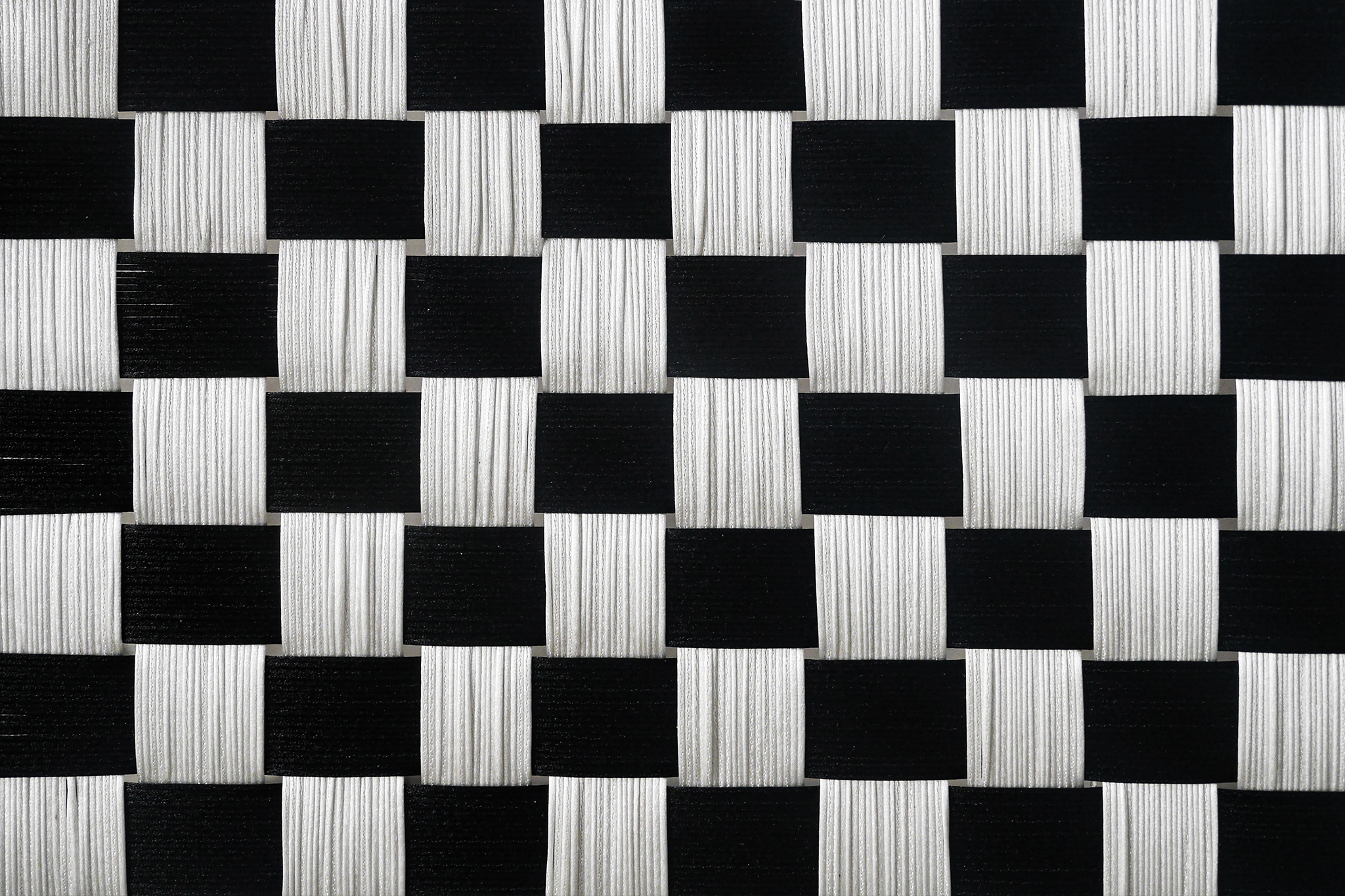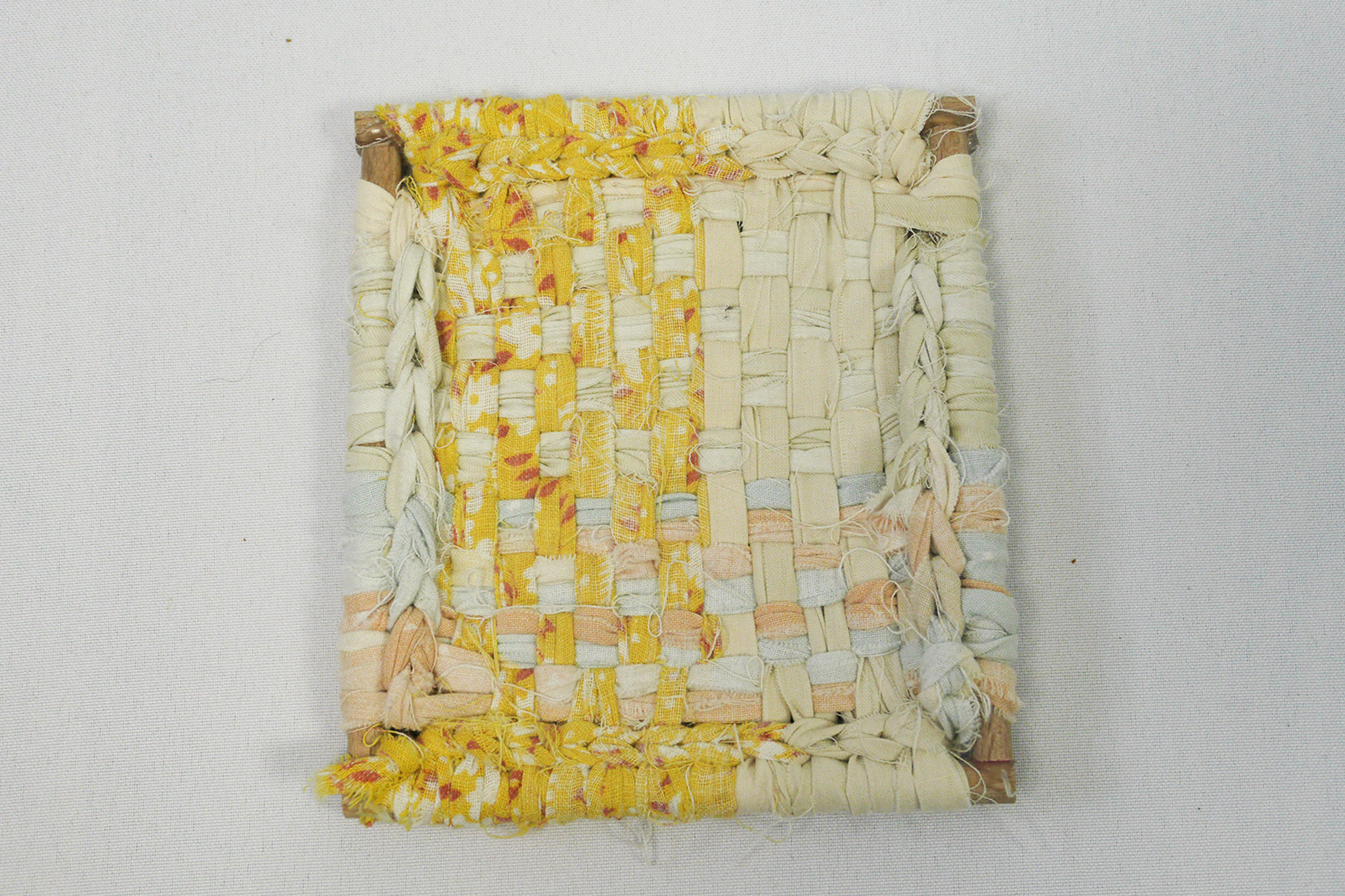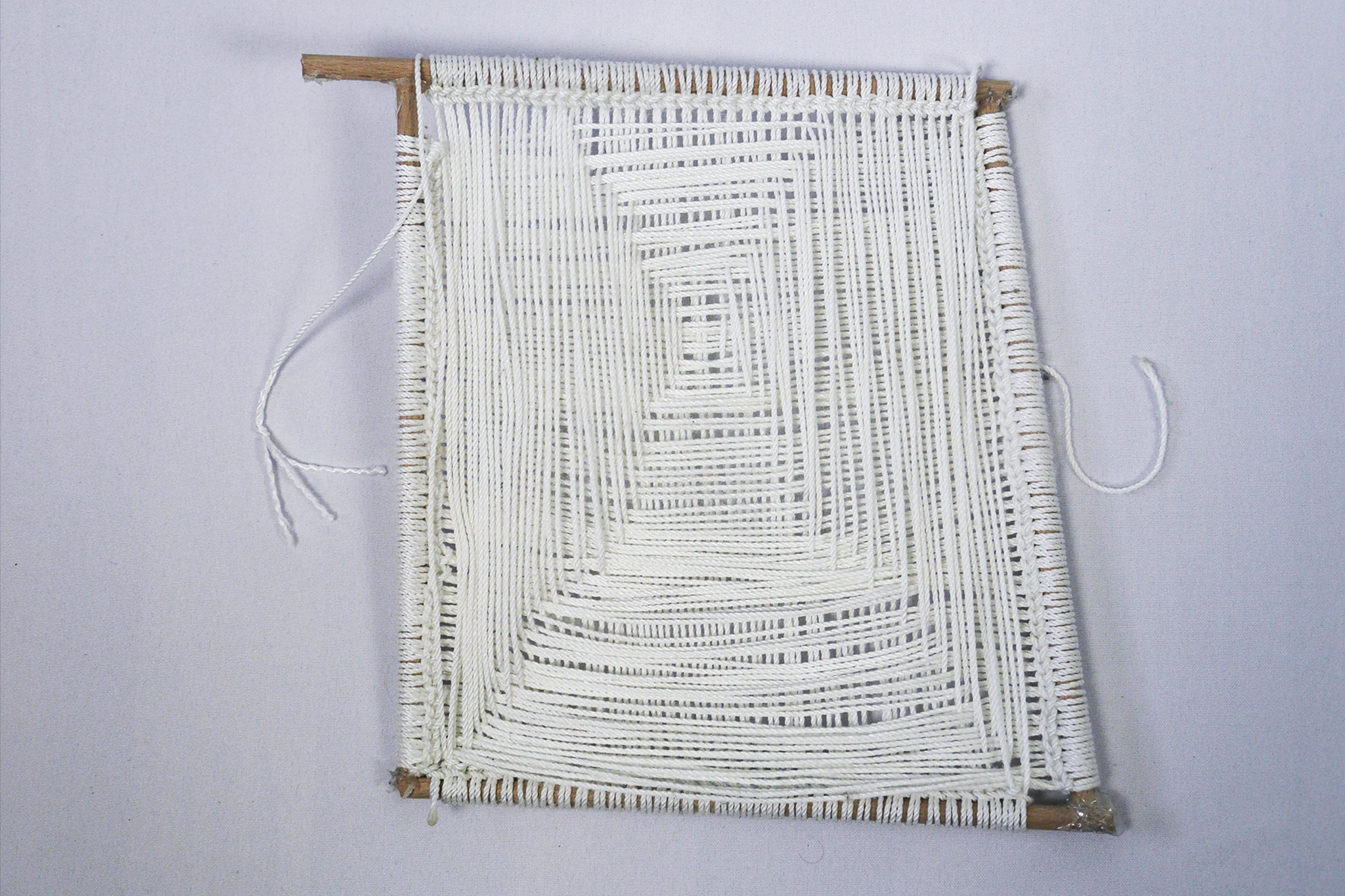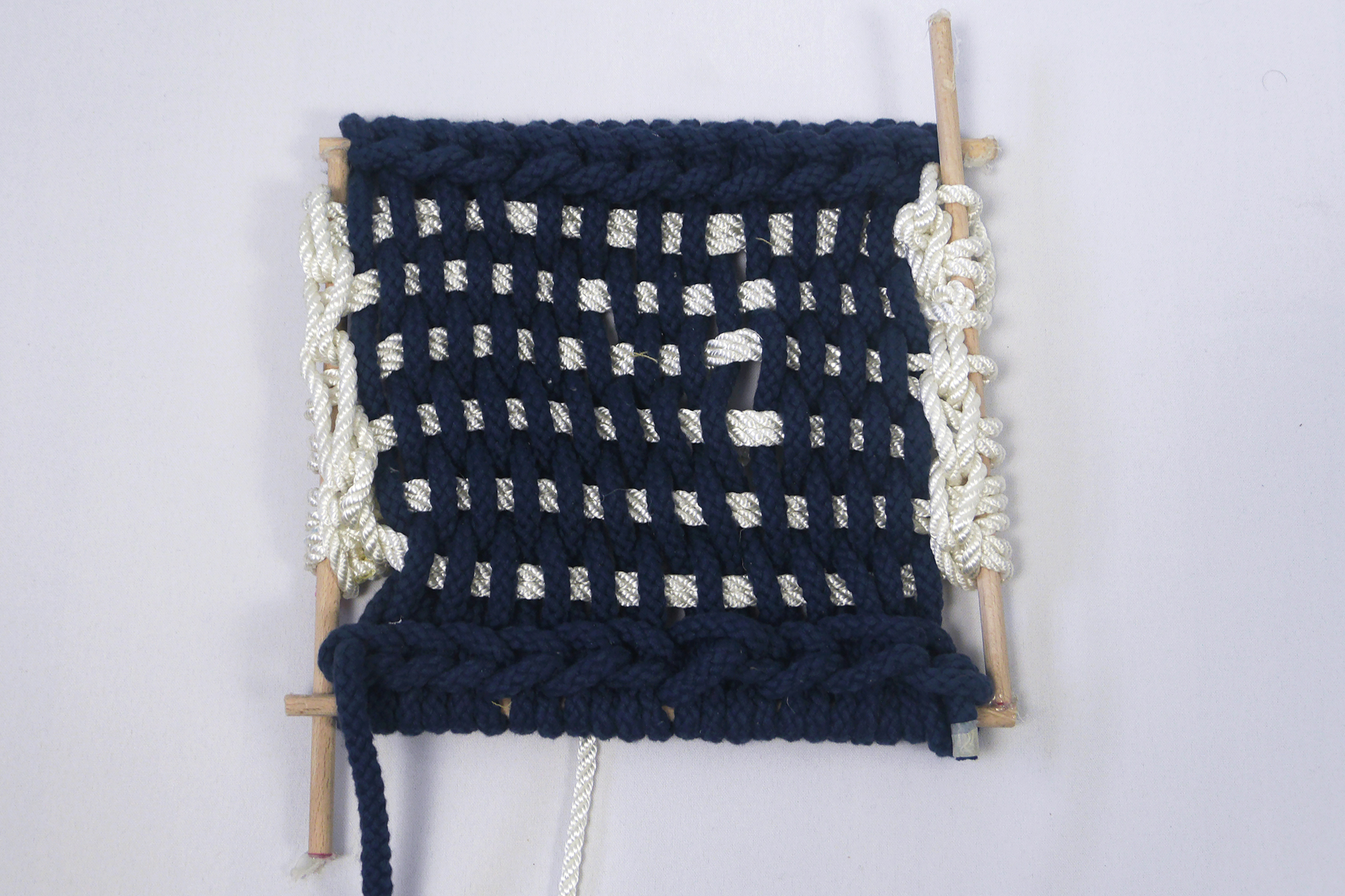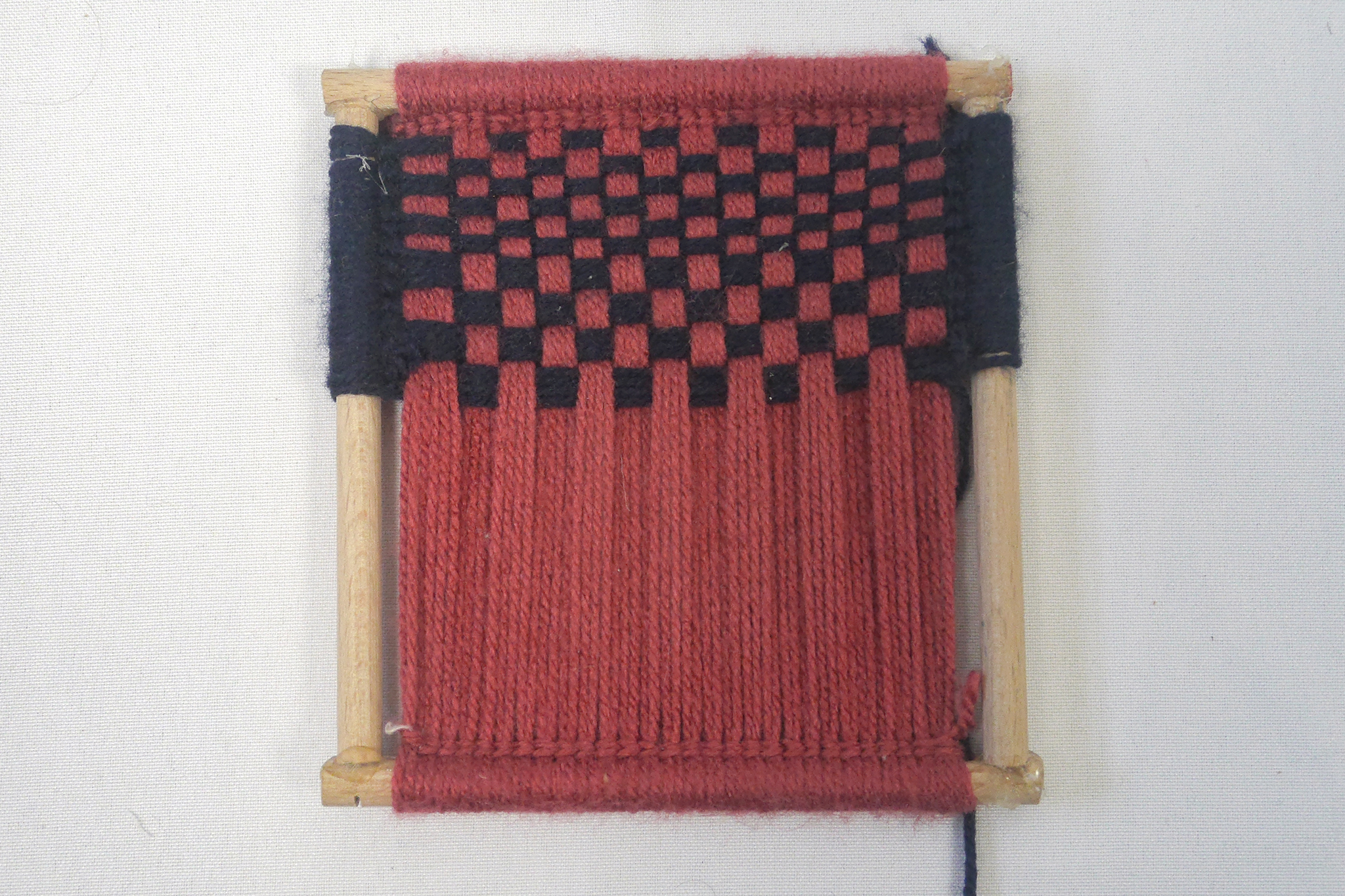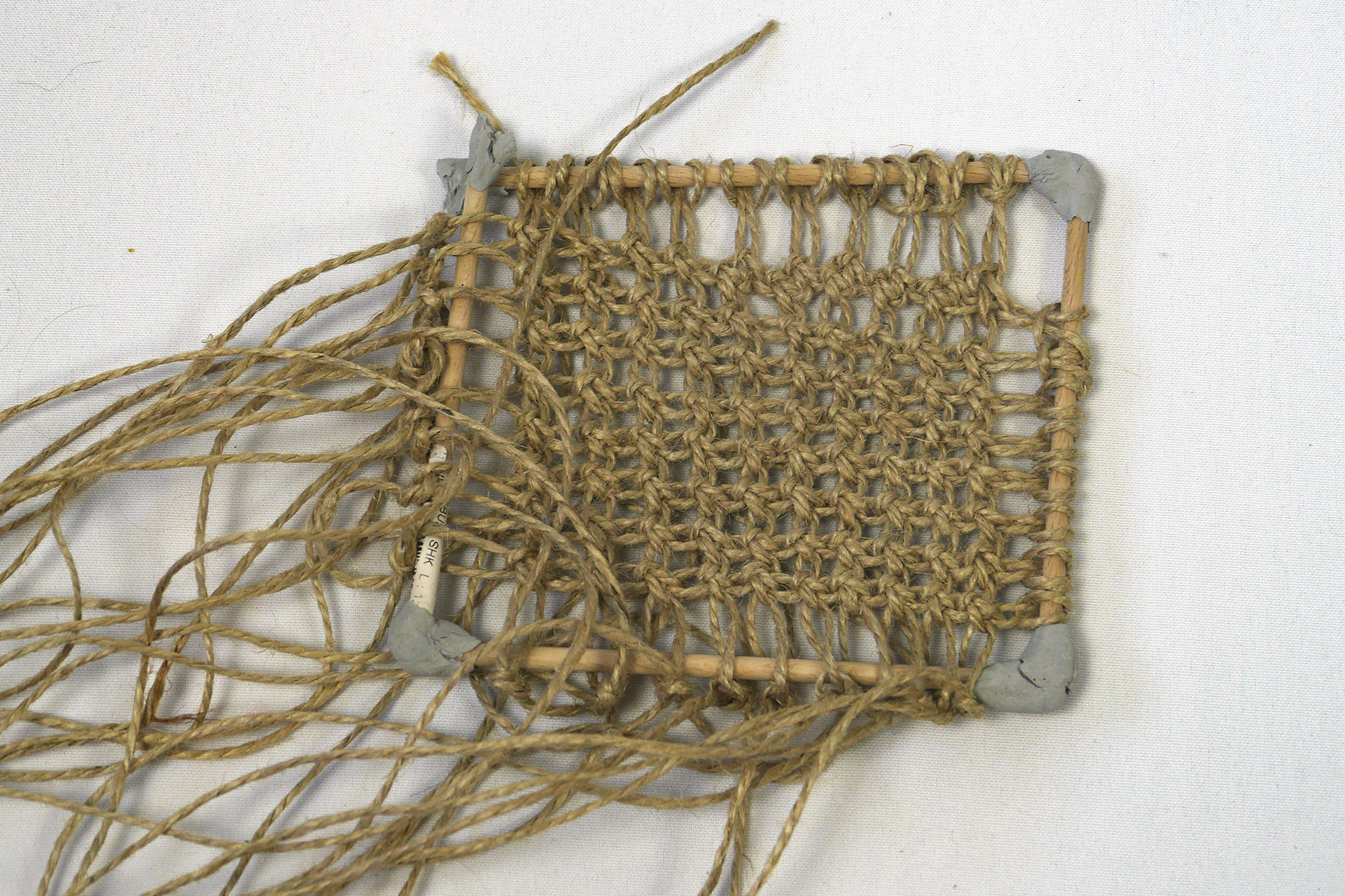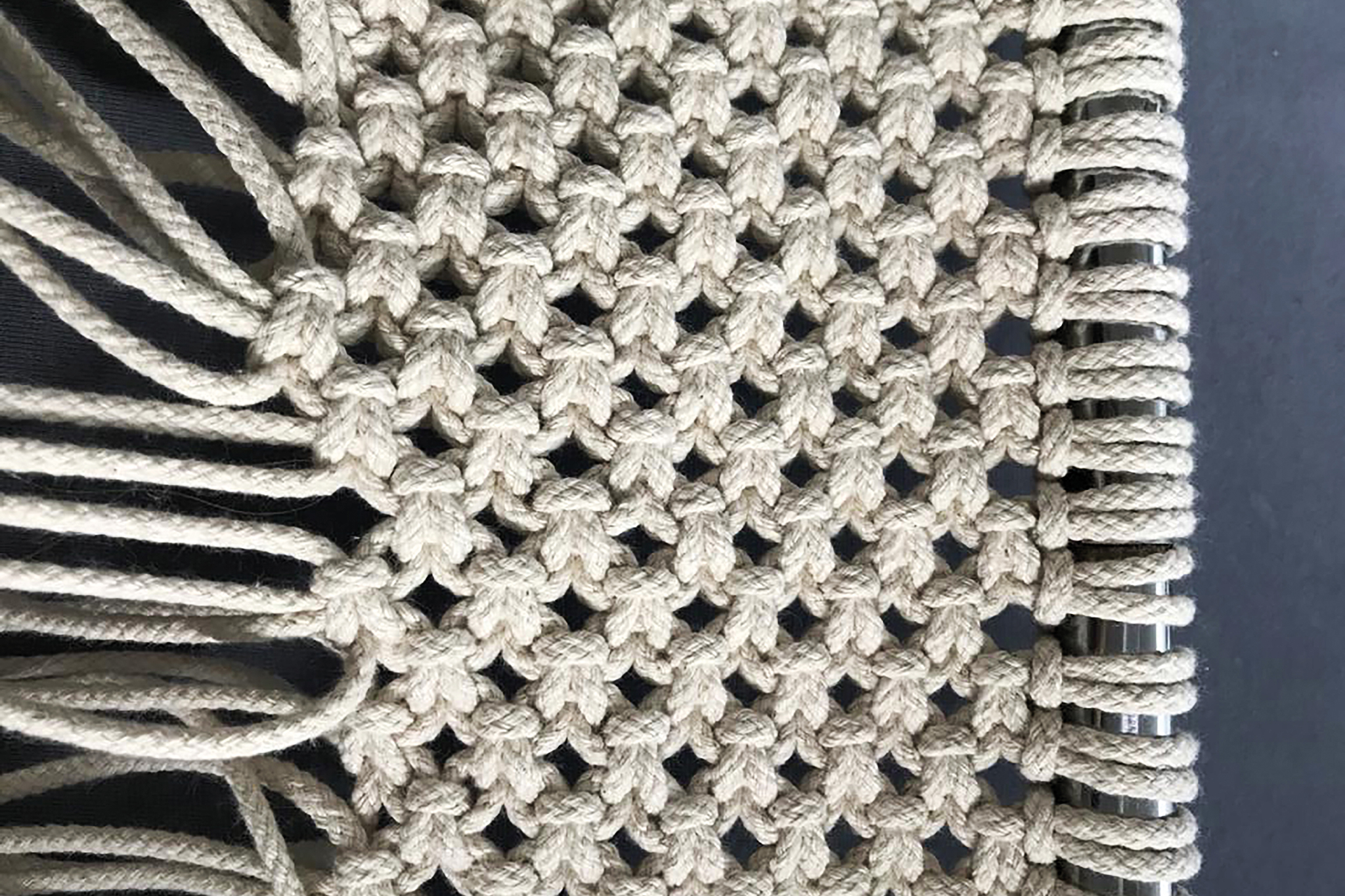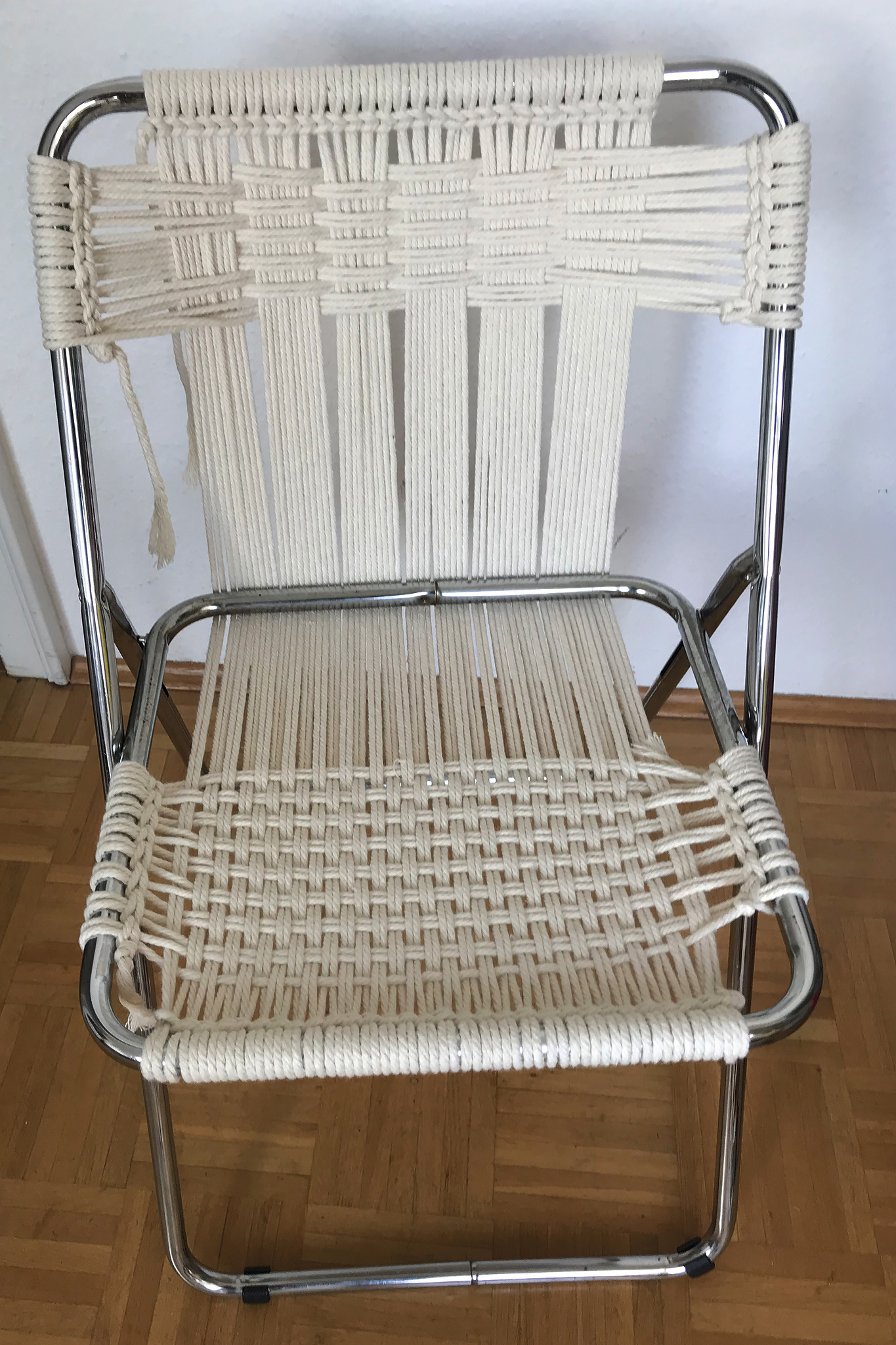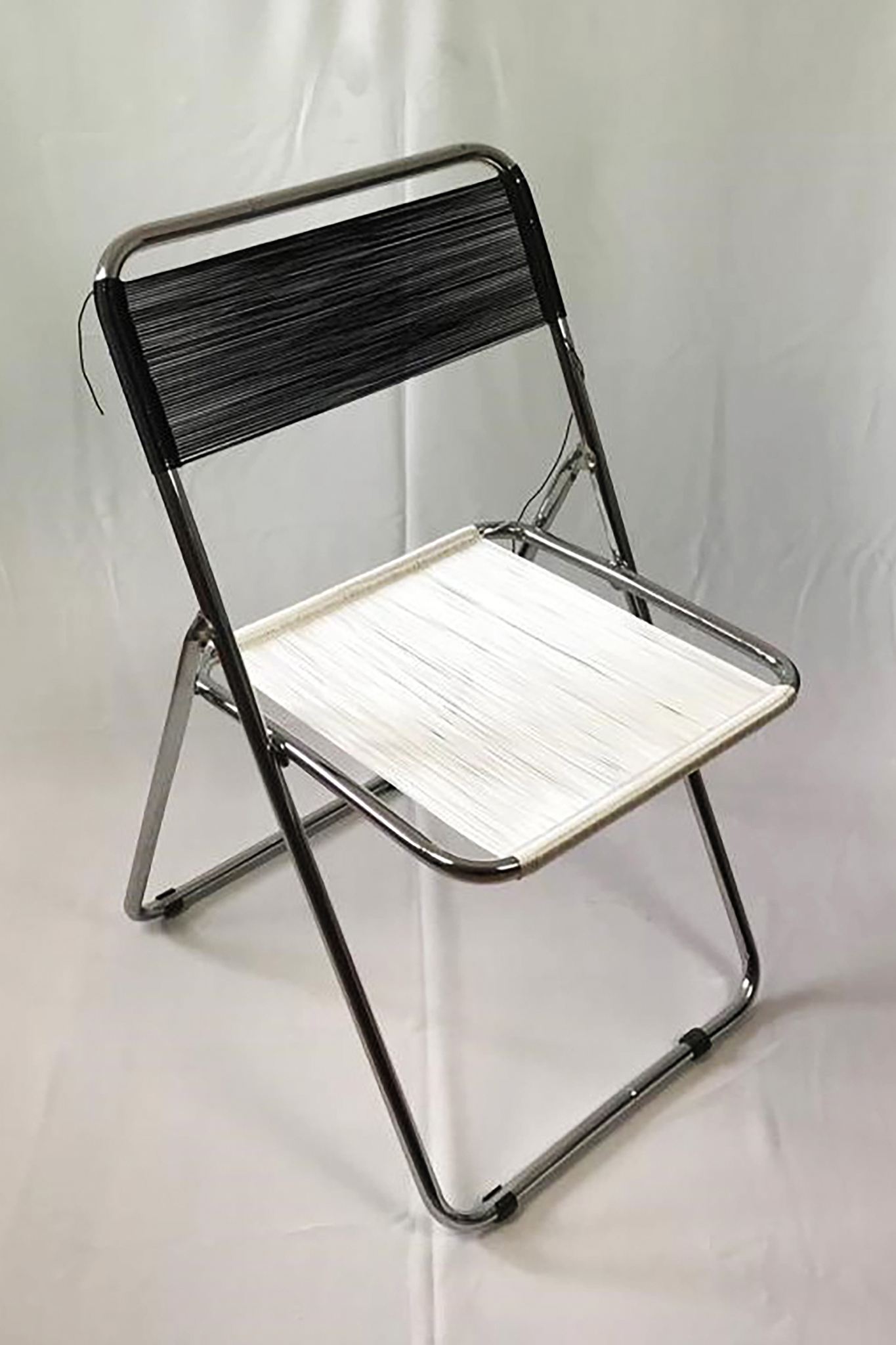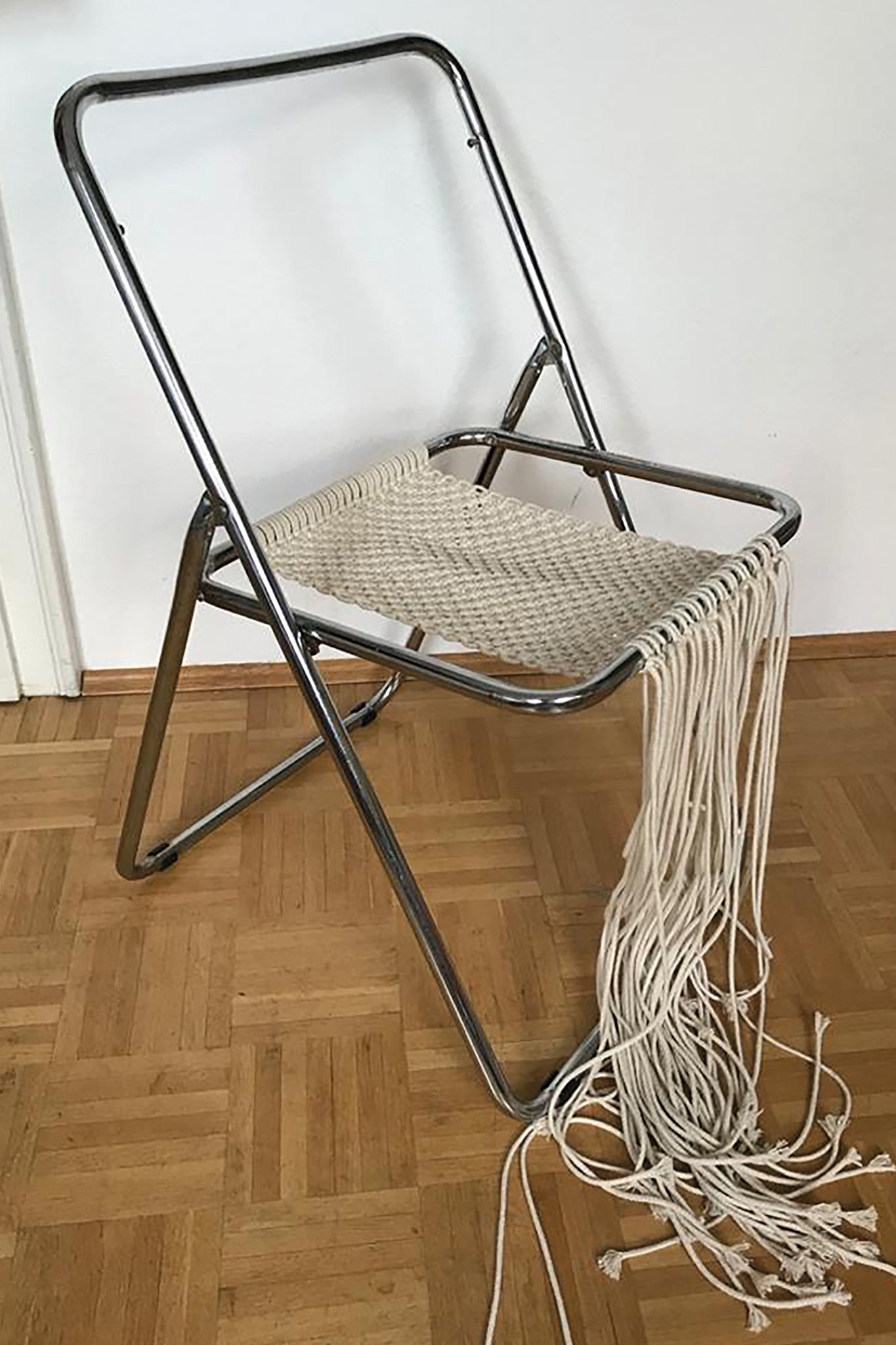RE-STRING
Häufig werden Stühle bei denen die Sitzfläche oder Lehne kaputt ist, weggeschmissen obwohl der Rahmen noch intakt ist. Ich habe zwei solcher Stuhlrahmen zuhause und habe nach einem Weg gesucht, diese neu zu bespannen und sie somit wieder nutzbar zu machen.Das Projekt „re-string“ beschäftigt sich mit einer Methode die es ermöglicht eine stabile, belastbare Fläche aus einer Schnur zu schaffen.Es werden keine Hilfsmittel außer einer Häkelnadel und zwei dünnen Stäben benötigt, um einen Rahmen auf diese Weise zu bespannen.Die Schnur wird an einem Ende festgeknotet und doppelt genommen auf die gegenüberliegende Seite gespannt, Das Ende wird um den Rahmen gewickelt und mit einem der Stäbe unter dem Rahmen festgehalten. Während dem Webvorgang werden die Schlaufen mit der Nadel ineinander gehäkelt. Die Schnurumwickelt den Rahmen beidseitig und eine Fläche spannt sich auf. Mit einer zweiten Schnur kann eine Fläche zwischen den zwei noch freien Seiten des Rahmens aufgespannt werden. Webt man diese in regelmäßigen Abständen durch die ersten Schnüre, entsteht ein Muster, welches nach Belieben variiert werden kann. Zudem wird die Fläche stabiler, da sich die senkrecht zueinander verlaufenden Schnüre gegenseitig stützen. Mit dieser Methode ist es möglich auf eine simple Art und Weise Stühle neu zu bespannen und ihnen ein neues Leben zu geben.
Often old chairs, whose seating is broken, get thrown away, even though the frame is still intact. I also have two of these broken chairs at home. Thats why i looked for a method to give them a new seating and make them usable again.„Re-string offers a way to create a robust surface out of a string.To restring a frame this way there are only a crocheting hook and two sticks required.The string is attached with a knot to one end of the frame. The thread is taken twice and pulled to the other side. The loop is wrapped around the frame and kept in place with one of the sticks. Every time the string gets to the other side of the frame, the old loop gets pulled trough the new one. In this way the string gets wrapped around the frame on both sides and a surface forms between them.With a second string the two remaining sides of the frame are stringed. During this part the second string gets weaved trough the already existing surface. That way varying patterns can be created. Furthermore the surface gets more stable, as the vertical strings support each other.With this method it is easily possible to give old chairs a new seating.
